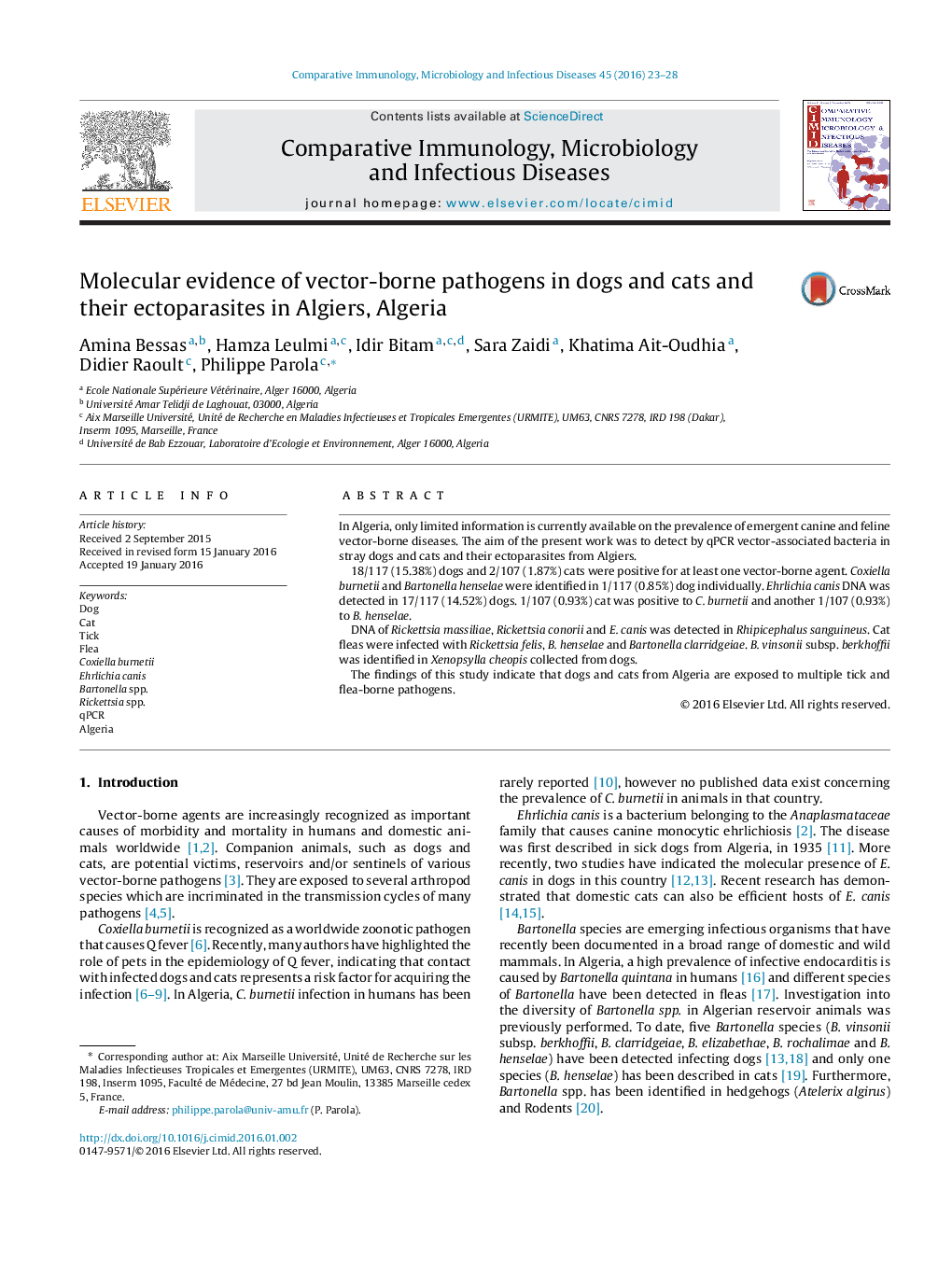| Article ID | Journal | Published Year | Pages | File Type |
|---|---|---|---|---|
| 2428139 | Comparative Immunology, Microbiology and Infectious Diseases | 2016 | 6 Pages |
•This paper has provided interesting new information on zoonotic pathogens emerging from companion animals in Algeria.•The first detection of C. burnetii in dogs and cats from Algeria.•E. canis was detected in spleen and ticks of dogs.•We report for the first time the detection of B. henselae and B. clarridgeiae in Ctenocephalides felis collected from cats in Algeria.
In Algeria, only limited information is currently available on the prevalence of emergent canine and feline vector-borne diseases. The aim of the present work was to detect by qPCR vector-associated bacteria in stray dogs and cats and their ectoparasites from Algiers.18/117 (15.38%) dogs and 2/107 (1.87%) cats were positive for at least one vector-borne agent. Coxiella burnetii and Bartonella henselae were identified in 1/117 (0.85%) dog individually. Ehrlichia canis DNA was detected in 17/117 (14.52%) dogs. 1/107 (0.93%) cat was positive to C. burnetii and another 1/107 (0.93%) to B. henselae.DNA of Rickettsia massiliae, Rickettsia conorii and E. canis was detected in Rhipicephalus sanguineus. Cat fleas were infected with Rickettsia felis, B. henselae and Bartonella clarridgeiae. B. vinsonii subsp. berkhoffii was identified in Xenopsylla cheopis collected from dogs.The findings of this study indicate that dogs and cats from Algeria are exposed to multiple tick and flea-borne pathogens.
